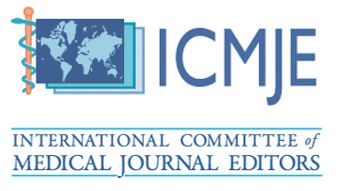Benign Pediatric Cerebellar Pilocytic Astrocytoma: A Single-Center Perspective
Mohsen Khamoushi Kahdouee1, Amirhosein Haghir1, Farhang Mirakhorli MD1, Ali Sadeghzadeh Shiraz MD2, Faezeh Hosseini MD2, Samin Safarian MD2, Amirmohammad Soleimanian MD2, Seyed Ali Shariat Razavi MD1, Neda Kamandi MD2*, Mohammadreza Rostami3
1Department of Neurosurgery, Faculty of Medicine, Mashhad University of Medical Sciences, Mashhad, Iran.
2Faculty of Medicine, Mashhad University of Medical Sciences, Mashhad, Iran.
3Faculty of Medicine, Xi'an Jiaotong University, Xi'an, China.
*Corresponding Author: Neda Kamandi, MD, Faculty of Medicine, Mashhad University of Medical Sciences, Mashhad, Iran.
https://doi.org/10.58624/SVOANE.2025.06.014
Received: November 11, 2024
Published: May 28, 2025
Citation: Kahdouee MK, Haghir A, Mirakhorli F, Sadeghzadeh Shiraz A, Hosseini F, Safarian S, Soleimanian A, Shariat Razavi SA, Kamandi N, Rostami M. Benign Pediatric Cerebellar Pilocytic Astrocytoma: A Single-Center Perspective. SVOA Neurology 2025, 6:3, 70-74. doi. 10.58624/SVOANE.2025.06.014
Abstract
Introduction: Astrocytomas of the cerebellum are non-malignant central nervous system tumors. They account for 10% of all brain tumors in children within the skull and 30% of all tumors in the back part of the brain in children, particularly in the first 20 years of life.
Methods: We retrospectively assessed the medical histories of patients, documenting their age at the time of operation, pre- and post-surgery MRI scans, tumor location, presence of hydrocephalus, surgical method, and neurological condition before and after surgery, post-surgery supplementary treatment, and the results.
Results: The ratio of males to females was 33:17. The age at the time of assessment varied from 3 to 19 years, while the age at the time of surgery ranged from 1 to 18 years. The follow-up period after surgery was between 1 and 12 years. In twenty-eight patients, the tumor was located in the cerebellar vermis, whereas 22 harbored hemispheric cerebellar astrocytoma. A total of 76% of these patients underwent complete surgical removal of the tumor. Nine patients required a second surgery due to remaining tumor tissue. A ventriculoperitoneal shunt was inserted in 5 out of 50 patients due to symptomatic hydrocephalus, and three patient underwent an endoscopic third ventriculostomy before surgery.
Conclusion: Astrocytomas in the cerebellum are non-malignant tumors, and in most instances, they can be entirely removed through surgery, leading to highly favorable results.
Keywords: Pilocytic astrocytoma, Cerebellum, Brain tumor, Children, Astrocytomas











